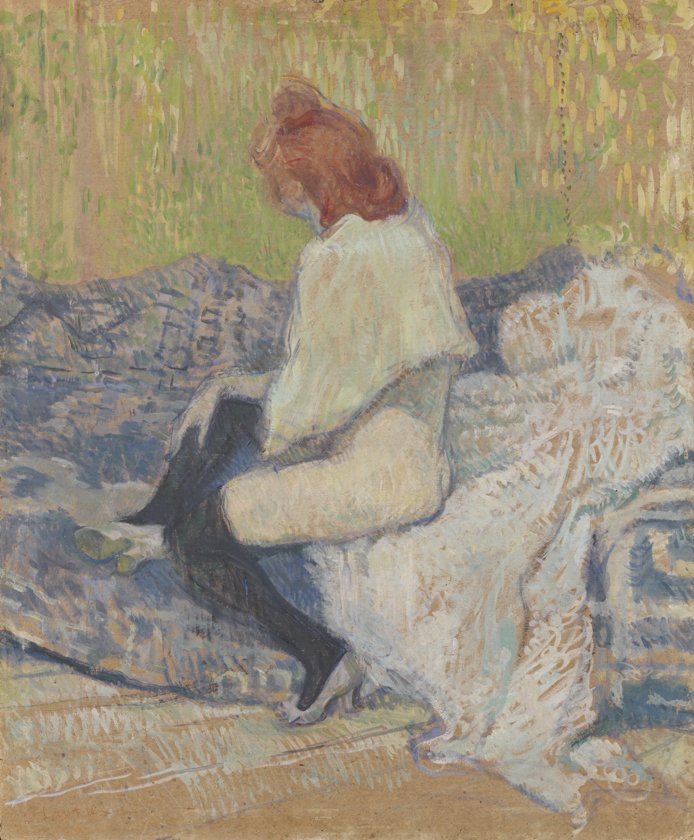Toulouse-Lautrec – Femme rousse assise sur un divan

Henri de Toulouse-Lautrec, Femme rousse assise sur un divan (Justine Dieuhl), 1897
Kunst Museum Winterthur, Hahnloser/Jaeggli Stiftung
Foto: Reto Pedrini, Zürich
Henri de Toulouse-Lautrec was a close observer of his surroundings, capturing them in his art with an almost photographic eye. The world of cabarets, ballrooms, brothels and circuses as well as the streets of Paris provided him with material for his works – an oeuvre that includes paintings, drawings, lithographs, pastels, illustrations and posters. The Frenchman of aristocratic origin, but an outsider all his life due to his short stature, did not care much for landscape painting and the fresh country air. He lived in the world of pleasure and the shadows of Paris, both of which he captured without prejudice or moralising.
Arthur and Hedy Hahnloser had become aware of Toulouse-Lautrec through illustrations in magazines and through their artist friends Bonnard and Vuillard. Both admired his work deeply, and all three artists shared a fondness for Japanese prints, whose two-dimensional style each interpreted in a different way.
It was Toulouse-Lautrec who first visited Bonnard because he liked his poster for France-Champagne so much. This first encounter led to a lifelong friendship. However, Maillol and Vallotton were the main intermediaries for the Winterthur collector couple. On their behalf, they searched for paintings and prints by Toulouse-Lautrec, which was not always easy. Paintings in particular were difficult to obtain: While the first prints found their way into the Hahnloser collection as early as 1908, it was another twelve years before they were able to acquire an oil painting.
We know only the first names of most of the women Toulouse-Lautrec painted – professional models or prostitutes. Although we also know the surname of the red-haired woman depicted here, we do not know any further details about her life. However, Justine Dieuhl seems to have had a certain connection with the artist, as she is one of the few models he portrayed directly from the front, i.e. with a psychological interest in the individual.
In the Hahnloser painting, however, she is shown anonymously from behind, about to put on or take off her black stockings. This is an intimate moment, a behind-the-scenes snapshot so to speak, empathetic and erotic, tender and voyeuristic at the same time. Merely real life.


